In addition, in the industrial raw material group, palm oil also reversed and recovered after 4 sessions of weakness. Overwhelming buying pressure pushed the MXV-Index up nearly 1.1% to 2,325 points when the market closed.
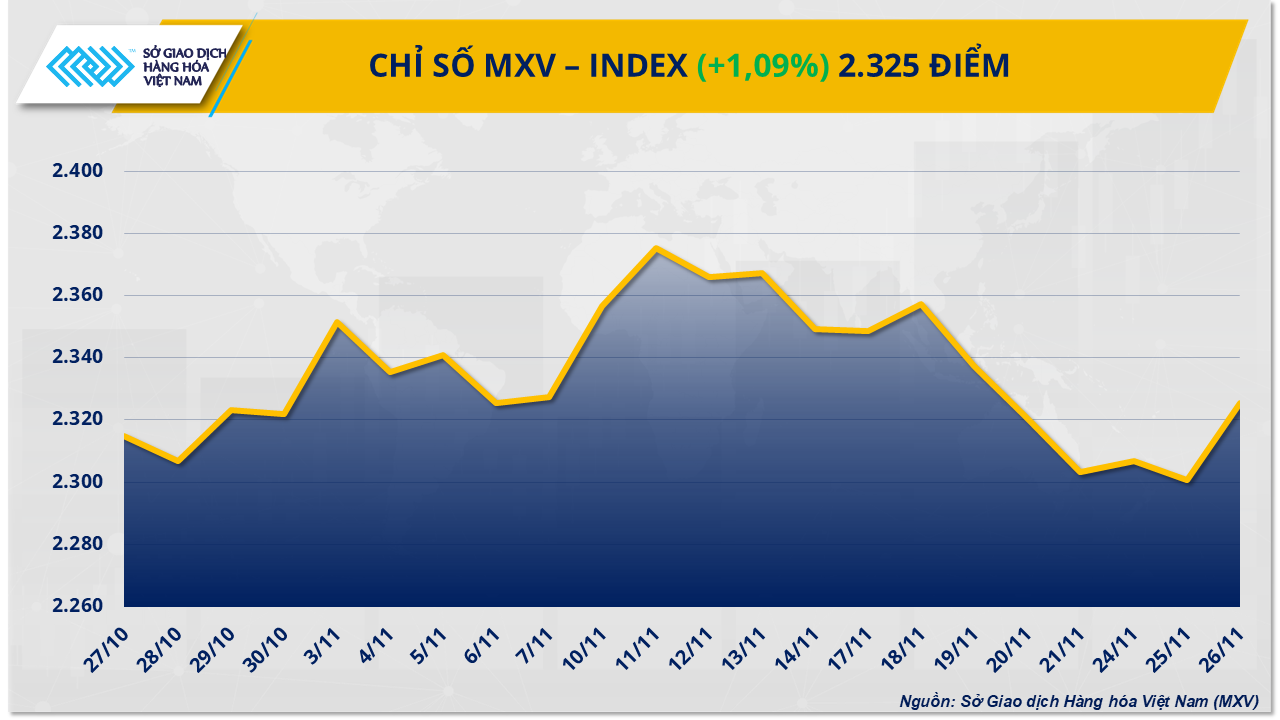
Silver prices extended gains to a third session
Closing yesterday's trading session, the metal group recorded overwhelming buying power with 8 out of 10 items increasing in price, leading the general trend of the whole market. In particular, silver price became the focus of attention of investors when it continued to increase by more than 3.8% to 52.9 USD/ounce, marking the third consecutive increase.

The main driver of the uptrend is the expectation that the US Federal Reserve (FED) will cut interest rates as soon as later this year. When interest rates are likely to fall, the cost of holding non-yielding assets such as silver becomes lower, drawing money back into the market. Recent comments from FED officials, including Christopher Waller and Stephen Miran, have reinforced the view that current policy is too tight and needs to be loosened to support the labor market and growth.
US economic data is adding pressure on the Fed to act. September retail sales rose just 0.2%, the lowest in four months, while November consumer confidence fell to 88.7 points - the lowest level since April. These figures reflect weakening purchasing power, suggesting the economy is lacking consumer momentum, thereby narrowing the room to maintain high interest rates.
In addition, the US dollar continued to weaken for the third consecutive session, making silver, which is priced in USD, more attractive to foreign investors. With its dual nature as an industrial metal and a hedge against economic fluctuations, silver tends to react more strongly than gold during interest rate easing cycles. Therefore, just expecting the Fed to slow down policy is enough to cause silver prices to break out.
However, the market will still need to closely monitor the employment situation, which could reverse policy expectations. The number of unemployment claims dropped to 216,000 last week, suggesting the labor market has not weakened enough for the Fed to ease aggressively, and any signs of recovery could slow silver's rally.
Domestically, the price of 999 silver on November 27 continued to rise for the third consecutive session, up nearly 2% and fluctuating around 1,707 - 1,742 million VND/tael depending on the region.
Palm oil prices end four consecutive sessions of weakness
Meanwhile, the industrial raw material group recorded relatively mixed developments. Notably, the price of Malaysian palm oil turned up slightly after 4 consecutive sessions of weakness. Specifically, the price of Malaysian palm oil increased by more than 0.7% to 970 USD/ton.
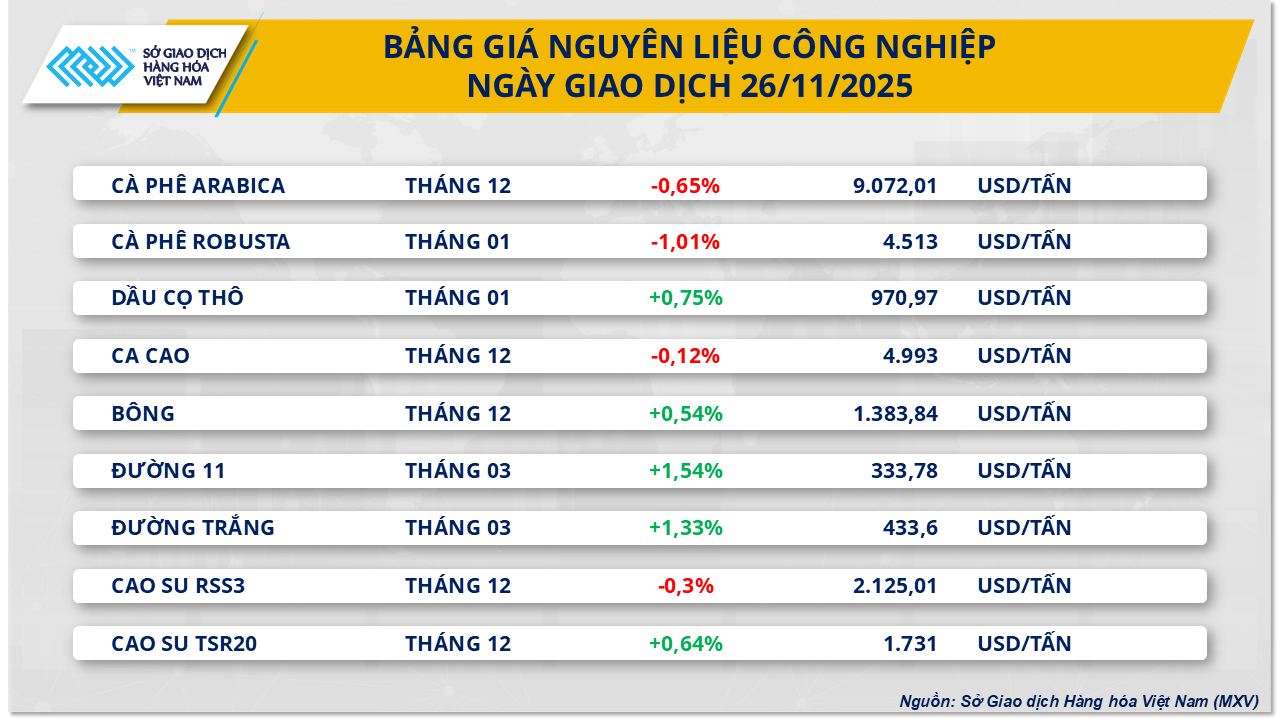
According to MXV, supply concerns in Malaysia were the main factor pulling palm oil prices back.
Data from Sunsir showed that Malaysia's palm oil exports during November 1-20 fell between 14.1% and 20.5% month-on-month, reflecting a slowing trend in supplies to the international market.
At the same time, the market is also getting a boost from import demand. Many exporters said that the largest customer, India, is expected to increase palm oil purchases by about 20% in the coming year because Malaysian palm oil prices are more competitive than other oils. This development is expected to stimulate import demand, creating more support for prices.
In addition, palm oil prices may also receive support from adverse weather factors as production is entering a low period due to seasonality. Weather forecasts show that Malaysia is entering the rainy season. Notably, according to information from the National Disaster Management Agency of Malaysia, more than 11,000 people in 7 states have been affected by floods. Unfavorable weather developments are forecast to affect future palm oil production, contributing to keeping palm oil in a stable price range.
However, the prospect of abundant supply remains the main factor putting pressure on palm oil prices. Analysts at SunSirs said in December that Malaysia is still in a production growth cycle, mainly affected by unfavorable factors, putting the palm oil market at risk of falling prices in the coming time. Forecasts show that Malaysia's crude palm oil (CPO) production in 2025 could exceed 19.5 million tons, up about 1% from 19.3 million tons in 2024, pushing domestic inventories to a six-and-a-half-year high.
In Indonesia, the Ministry of Agriculture is also planning to expand palm oil plantations by 600,000 hectares, of which 400,000 hectares will be for smallholders and the rest will be for state-owned enterprises. The increase in the size of the plantations in this key producing country is expected to further reinforce the picture of oversupply in the palm oil market in the medium term.
Source: https://baotintuc.vn/kinh-te/gia-bac-but-pha-len-dinh-tuan-dau-co-nguoc-dong-sau-chuoi-giam-sau-20251127091636562.htm








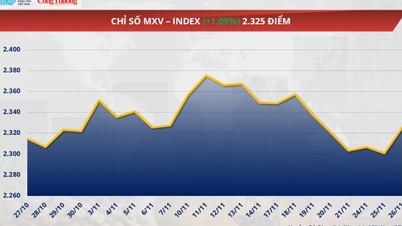

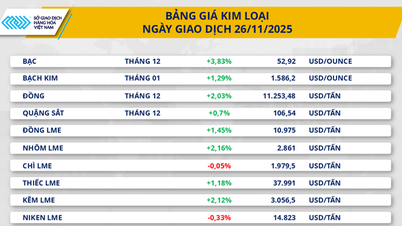







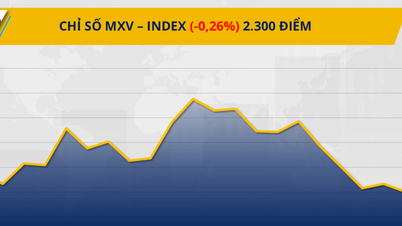






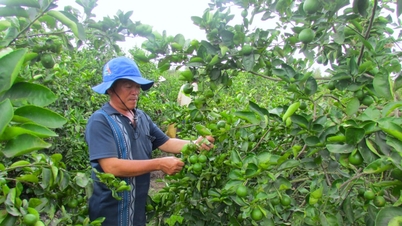










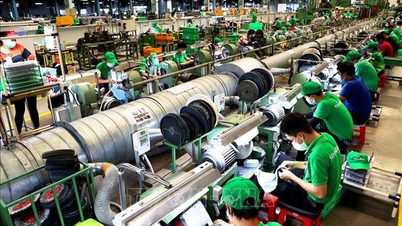
















































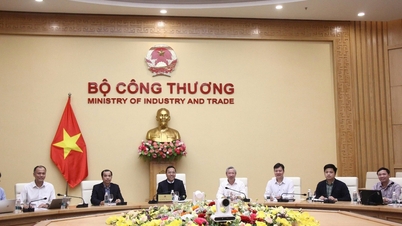
























Comment (0)